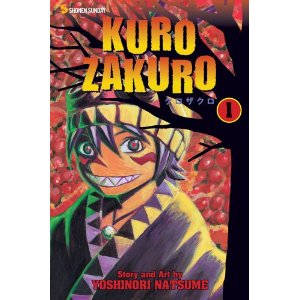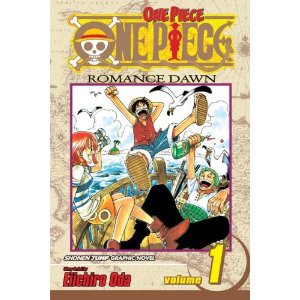Kurozakuro Volume 1 by Yoshinori Natsume
This manga about a bullied schoolboy who makes a pact with evil forces to gain strength wasn’t really to my taste, but Kurozakuro offers a glimpse of something a little different as it incorporates the horror genre into an otherwise conventional shonen tale. Kurozakuro starts out by introducing an overly familiar shonen hero. Mikito is mild and meek, and thus the target of bullies at school. His humiliation is doubled when the girl he has a crush on attempts to come to his rescue. A strange creature comes to Mikito in a dream. Mikito crawls across a desolate landscape towards a barren tree where an impish child with sharp teeth commands him to name his desire. Mikito says that he wants to be stronger so “no one will push me around anymore.” The child says he’ll give Mikito power and in return he has to make the tree bloom. Mikito wakes up the next day with heightened senses, a quick temper, and super strength.
Mikito starts finding joy in violence, and his crush Saki is disgusted by him. He starts dealing with odd compulsions, and finds out that there are demon hunters out to get him. Mikito is slowly turning into an ogre and starts craving human flesh. To make matters worse, a teen demon hunter girl has just transferred into his class. Trying to hide from demon hunters, eating raw meat, and struggling with the compulsion to kill people can make it tough to function effectively in high school. Other than his new habit of thinking of people as meat, there isn’t much to distinguish Mikito from every other bullied shonen manga hero who wants to get stronger. Natsume’s art is a little stiff. The lack of fluidity works fine when he’s referencing the visual language of horror manga, with weird lighting and shading on Mikito’s face as his ogre personality starts to take over, but isn’t as effective during the action scenes when the ogre hunters start to take out their prey.
I enjoyed a couple things about Kurozakuro. The shonen/horror mash-up was interesting and the dark tone set it apart from the more typical fighting manga I tend to expect. But none of the characters were particularly compelling, and I didn’t put the manga down feeling all that invested in the story. I wouldn’t hesitate to recommend this title to someone who enjoys horror manga. For me, the stock plot elements and lackluster art overwhelmed the more interesting way Natsume was playing with genre. If the art had been a bit more surreal or the characters more unique I’d probably like this title a lot more.




